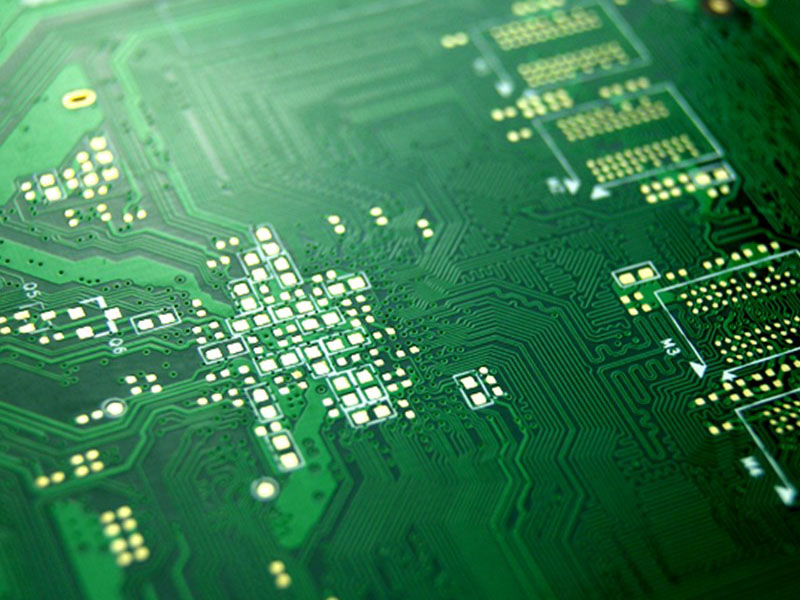Rigao Electronics
Contact Sales at Rigao.
The so-called "PCB proofing" refers to the trial production of printed circuit boards before mass production. It is mainly used by electronic engineers to design small circuits and complete PCBs, and then carry out small-scale trial production to the factory. To our knowledge, this process is "PCB proofing" before confirming the product design and testing the product design. PCB proofing detailed process:

1. Contact the manufacturer
First, you need to inform the pcb manufacturer of the documentation, process requirements and quantities. Take Rigao Electronics as an example.
2. Opening
Purpose: According to the requirements of the engineering data MI, it is cut into small pieces on a large sheet that meets the requirements to produce a panel. Small sheets to meet customer requirements.
Process: large piece → cutting board according to MI requirements → simmering plate → beer loin \ covering → plate out
3. Drilling
Purpose: According to the engineering data, the required holes are drilled in the corresponding position on the plate that meets the required size.
Process: laminated plate pin → upper plate → drilling → lower plate → inspection \ repair
4.Shen Tong
Purpose: Copper immersion is used to deposit a thin layer of copper on the walls of insulating holes by chemical methods.
Process flow: rough grinding → hanging plate → automatic copper wire → lower plate → immersed in 1% dilute sulfuric acid → thickened copper
5. Graphic transfer
Goal: Graphic transfer is to transfer images from production film to board
Process: (blue oil process): grinding plate → printing the first side → drying → printing the second side → drying → exposure → imaging → inspection; bit → exposure → still image → inspection
6. Graphic plating
Purpose: Pattern plating is the plating of a copper layer and a gold-nickel or tin layer on a bare copper skin or hole wall of a circuit pattern.
Process: upper plate → degreasing → secondary washing → slight corrosion → water washing → pickling → copper plating → water washing → pickling → tinning → water washing → lower plate
7. Peeling
Purpose: To remove the anti-plating layer with NaOH solution, and expose the non-circuit copper layer.
Process: water film: insert frame → soak alkali → rinse → scrub → pass through the machine; dry film: put the plate → pass through the machine
8. Etching
Purpose: Etching is to etch away the copper layer of non-circuit parts by chemical reaction method.
9. Green oil
Purpose: Green oil is used to transfer the pattern of green oil film to the board to protect the circuit and prevent tin on the circuit when soldering parts.
Process flow: grinding plate → printing photosensitive green oil → translation plate → exposure → shadow; grinding plate → printing first side → baking plate → printing second side → baking plate
10. Character
Purpose: Provide characters as recognizable marks
Process: When the green oil is finished, let it cool, place it on the screen, and print the characters.
11. A gold-plated finger
Purpose: Nickel / gold plating on the fingertips of the plug, and plating according to the required thickness to make it harder and more wear-resistant
Process: Upper board → degreasing → cleaning twice → micro-etching → cleaning twice → pickling → copper plating → cleaning → nickel plating → cleaning → gold plating
12. Tin plating (co-located process)
Purpose: Spraying is to spray a layer of lead-tin on bare copper surface not covered with solder resist oil to protect the copper surface from corrosion and oxidation and ensure good soldering performance.
Process: micro-etching → air drying → preheating → rosin coating → solder coating → hot air leveling → air cooling → washing and air drying
13. Shaping
Purpose: To produce the shape required by the customer by stamping or CNC gong. Organic gong, beer board, gong, hand cut
Note: The accuracy of the data gong board and beer board is higher, followed by the manual gong, and the manual cutting board can only be made with some simple shapes.
14. Testing
Purpose: Through electronic 100% test, to detect open circuits and short circuits that are not easy to visually detect.
Process: upper mold → release plate → test → pass → FQC visual inspection → unqualified → repair → return test → OK → REJ → scrap
15. Final inspection
Purpose: 100% visual inspection of the appearance defects of the panel, and repair minor defects to avoid problems and outflow of the defective panel.
Specific work flow: feed → view data → visual inspection → pass → FQA spot check → pass → package → fail → process → check OK
Rigao Electronics is committed to providing customers with the best prices, the highest quality products, the fastest delivery times, the most professional engineering support and the best after-sales service for customers worldwide.
Copyright © 2019 Rigao Electronics | All Rights Reserved